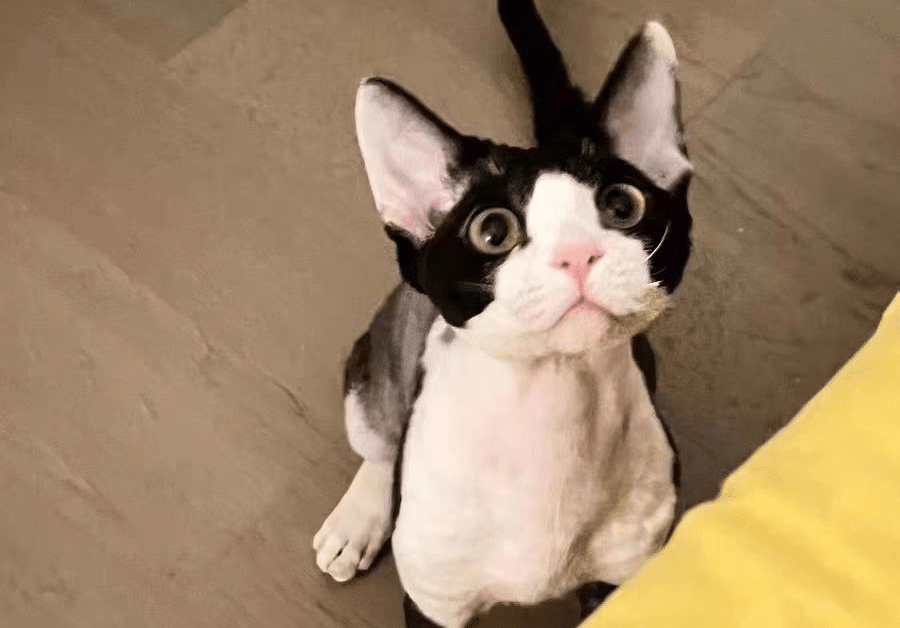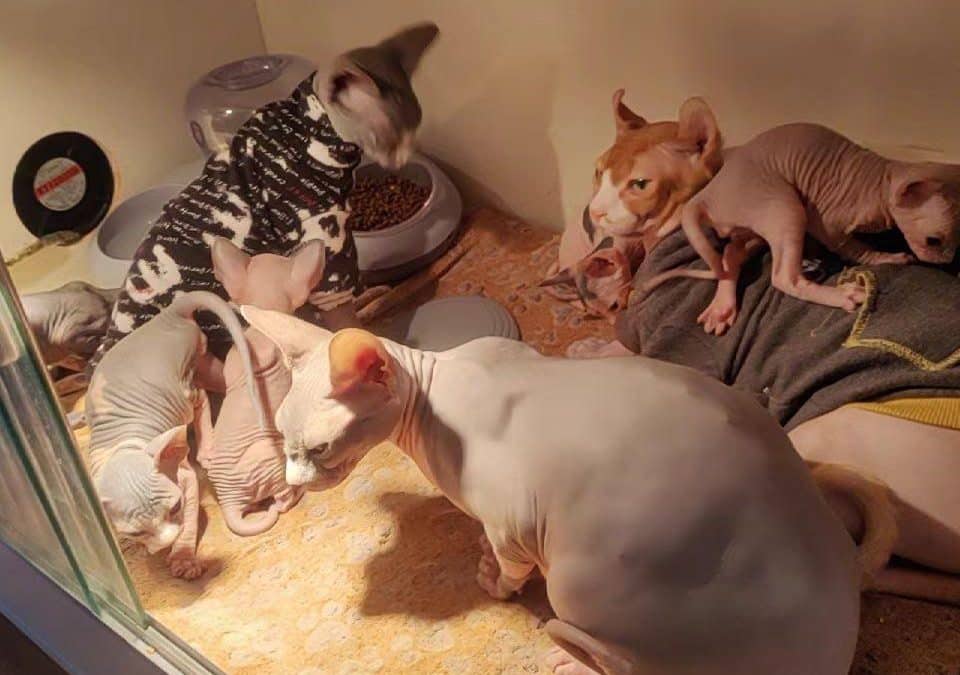
by Dr. Faith Whitehead | Nov 11, 2022 | Research and News
Having a pet companion might be therapeutic for teens going through difficult times who may not want to be around other people. Having a pet may help them feel less alone, and the caretaking may help them develop a sense of responsibility and purpose. Pets can also teach kids about empathy, trust, and selflessness. They can also reduce stress and anxiety levels. Pets can have a positive impact on mental health. They can provide companionship, love, and support during difficult times. Pets provide unconditional love and are a loyal friend. They can help reduce anxiety and stress and can provide a sense of comfort. Pets can also help teach responsibility and can provide a sense of purpose.
It may be tough to decide, but only one animal has the power to entirely lift a person’s spirits. The ferret is this animal’s finest feature, one of its three best qualities, making it a great fit for any personality. They are playful, curious, and mischievous. Their personalities are so endearing that they have even been known to make people laugh. The second best quality of the ferret is its loyalty. Ferrets bond closely with their owners and are quick to learn tricks. They are also very affectionate, and will often cuddle with their owners. The third best quality of the ferret is its intelligence. Ferrets are very smart animals, and are known for their problem-solving abilities. They are also quick learners, and can be trained to do a variety of tricks. Ferrets are known for their mischievous and playful nature. They are often described as “full of energy” and “always on the go.” They are also very curious and intelligent, which can make them challenging to keep entertained. Ferrets are also extremely affectionate animals. They enjoy cuddling and being petted, and they have been known to form strong bonds with their owners. Finally, ferrets are very social animals. They enjoy being around other ferrets and animals, and they do not do well when left alone for long periods of time.
Every animal has drawbacks, but there are only two major drawbacks with ferrets: they may sometimes be too inquisitive and they cannot eat table leftovers. Despite everything, a ferret still makes a wonderful pet. Your day may be made better by their antics since they specialize in trying to steal things like wallets, vehicle keys, or anything else they have become attached to. They will also try to search your pockets or rummage through your purse. They are notorious for chewing on cords and cables, so unplug any electronics they can reach before leaving the house. If you are thinking about getting a ferret, you should think about some pros and cons of having a ferret as a pet. Ferrets have been domesticated for a long time, and they make wonderful pets. They are very playful and curious, but they can also be mischievous. They are very active, and they need a lot of exercise. Ferrets are very curious, and they will want to explore everything. This can be a good thing, but it can also be a bad thing. They will want to go through your trash, and they will want to chew on things. You need to make sure that you keep an eye on them, and you need to be prepared for them to make a mess. Ferrets are very active, and they need a lot of exercise. They will want to run and play, and they will want to explore.

by Dr. Faith Whitehead | Nov 11, 2022 | Cat Cancer & Tumors, Dog Cancer & Tumors, Food & Health, Medicines & Therapies, pet Chinese herbal medicine, Research and News
Ayurveda is a system of medicine originating in ancient India that seeks to treat the body, mind, and spirit as a whole. It is based on the belief that health and wellbeing are determined by a balance of the three doshas, or energies, in the body. Ayurveda practitioners use a variety of techniques, including diet, lifestyle changes, and massages, to restore balance and improve health. TCM, or Traditional Chinese Medicine, is another system of medicine with ancient roots. It is based on the belief that health is determined by the balance of yin and yang energies in the body. TCM practitioners use a variety of techniques, including acupuncture, herbal medicine, and massage, to restore balance and improve health.
There are several key differences between Ayurveda and Traditional Chinese Medicine (TCM). Ayurveda is a holistic system of medicine from India that dates back over 5,000 years. TCM is a similar system of medicine from China that has been practiced for over 5,000 years. One key difference between the two systems is that Ayurveda focuses on the mind-body connection, while TCM focuses more on the physical body. Ayurveda also emphasizes the importance of balance in one’s life, while TCM focuses more on the use of herbs and acupuncture to restore balance. Ayurveda emphasizes preventative care, while TCM focuses more on treating existing conditions. Ayurveda’s three doshas are Vata, Pitta, and Kapha. Each dosha is made of a combination of two of the five elements. Vata is made of space and air and governs movement and change. Pitta is made of fire and water and governs metabolism, digestion, and transformation. Kapha is made of water and earth and governs structure and stability. Our bodies are made of the same five elements that make up the universe. Ayurvedic practitioners believe that when our bodies are out of balance, it’s because we have too much or too little of one of the elements. Ayurveda aims to bring the body back into balance by using dietary and lifestyle changes, as well as herbal remedies.
Both TCM and contemporary drug are practised in mainland China and China, and most Chinese-Americans are comfortable being both medical thought schemes. Nevertheless, certain fields of care are seen as better suited for contemporary drug, e.g., emergency aid and identifiable illnesses , e.g., cancer, stroke, surgery and diabetes. Some degenerative illnesses, e.g., arthritis or digestive subjects, may remain mostly treated with TCM. Some Chinese people would have TCM first to present a symptom or illness before seeing the doctor. Because TCM emphasises that each part of the structure is related with others, it should be required that some Chinese-Americans can incorporate components of TCM into the attention they have, including end-of-life care. People may create their own therapy, for instance altering their fast, frequently seeking help from practitioners, who may or may not be certified]
There is a significant body of evidence that suggests that Ayurveda and TCM can be effective in the treatment of a wide range of conditions. In particular, these modalities may be helpful in the management of chronic conditions such as pain, fatigue, and arthritis. Additionally, Ayurveda and TCM may also be beneficial in the treatment of mental health conditions such as anxiety and depression.
About the author: Dr. Faith Whitehead; is a licensed veterinarian and researcher.

by Dr. Faith Whitehead | Nov 11, 2022 | Pet Story, Research and News
It is well established that stress has a role in many common pet behavioral issues as well as several prevalent illnesses. Stress can be characterized as a response to a perceived threat, danger, or loss of control. The stress response is an innate reaction that is designed to protect the individual by preparing the body to fight or flee. Many of the physical and behavioral effects of stress are beneficial in the short term, but become detrimental if the stressor is not removed and the response persists. The stress response is characterized by a complete change in the way the body functions. When the body perceives a threat, the autonomic nervous system activates the sympathetic nervous system. The sympathetic nervous system is responsible for the fight-or-flight response, which is characterized by a release of hormones that trigger a series of physical changes. These changes include an increase in heart rate, blood pressure, and respiration, as well as an increase in blood sugar and a suppression of the immune system.
Cats, unlike other pets, don’t often express their feelings outwardly; instead, they get silent and retreat when they feel anxious. Cats will sometimes hide when they feel anxious or stressed. This is their way of dealing with the situation and trying to make themselves feel safe. If your cat is hiding more than usual, it may be a sign that they are feeling anxious or stressed. Try to provide them with a safe, quiet place to hide, and avoid disturbing them while they are in their hiding spot. Owners need to be aware of the symptoms of stress in order to assist their cats. Cats can be easily stressed by loud noises and people moving around in their environment. If you notice your cat is hiding a lot or is not playing and grooming as much as usual, it may be experiencing stress.
The body of a cat has various physiological mechanisms that control stress. For example, the adrenal gland produces the hormone cortisol in response to stress. Cortisol regulates the body’s stress response and can help the body to recover from stress. The nervous system also plays a role in the stress response. The sympathetic nervous system is responsible for the body’s “fight or flight” response. This response is a survival mechanism that helps the body to deal with dangerous situations. When the body is under stress, the sympathetic nervous system increases heart rate and blood pressure, and decreases blood flow to the digestive system. The parasympathetic nervous system is responsible for the body’s “rest and digest” response. This response helps the body to recover from stress and return to a state of relaxation. The endocrine system also plays a role in stress. The hypothalamus is a part of the brain that controls the endocrine system. The hypothalamus is responsible for releasing hormones that control the body’s stress response. There are several different types of stress. Acute stress is a short-term stress response that occurs in response to a specific event. This type of stress is typically not harmful and can even be beneficial, as it can help the body to deal with a dangerous situation.

by Dr. Faith Whitehead | Nov 11, 2022 | Pet Story, Research and News
There are many reasons why cats are much loved and considered ideal house pets. One reason is that they are very independent animals. They don’t need to be taken on walks or require a lot of attention like some other pets do. Cats also have a lot of personality and are often very affectionate with their owners. They are also very clean animals and don’t require a lot of grooming. Lastly, cats are relatively low maintenance pets overall which makes them ideal for busy people. Cats have also been shown to have a calming effect on their owners, and can help reduce stress levels. A 2004 study found that 42% of cats surveyed helped their owners feel less lonely, and another study found that cat owners were 30% less likely to die of a heart attack than those who didn’t own a cat. While cats may not be the most affectionate animals, they do form strong bonds with their owners. A study in 2007 found that while cats didn’t show much preference for their owners over strangers, they did form attachments with their owners that were similar to the attachments formed between parents and their young children.
But perhaps the biggest reason people love cats is because they are so cute and lovable. They have adorable faces, and their small size means they can be easily cuddled. Cats also have a reputation for being very clean, and they groom themselves regularly. This means they don’t shed as much as other pets, and they don’t have that “wet dog” smell. First and foremost, cats are good friends for humans. Many cats are lovable. They will cuddle up and want scratches or patted on the skin. A purring cat is impossible to resist. Cats are often fairly playful when they’re not feeling affectionate. They like chasing anything hanging on a thread, including balls, feathers, and other objects. When their owners are playing along, they really like it. Cats are trainable, despite what the general public believes. Like with a dog, a cat may be educated to stop undesirable behavior or perform tricks using incentives and punishments. Even cats will fetch!
Second, cats are well-mannered members of the family. Cats don’t bark or produce other loud sounds as dogs do. The majority of cats seldom ever even meow. They often lead tranquil lives. Additionally, cats seldom have “accidents.” Most cats will utilize the litter box without fail going forward if their mothers teach them to do so. When shown the box, even stray cats often comprehend the idea and will use it frequently. Cat owners must account for the fact that their pets actually have claws. The cat will often be happy to stay off the furniture if there is a tall scratching post in a favorite cat location of the home. Cats may, of course, be declawed as a last resort.
Finally, one of the best qualities of cats as home pets is their simplicity of maintenance. Cats do not need walking. As they play and use the litter box for business, they receive enough of exercise in their home. A litter box may be easily and quickly cleaned. Cats groom themselves on their own as well. Since cats often clean themselves, it is virtually never required to bathe them. Compared to humans, cats are more fastidious about their personal hygiene. Cats are also unafraid of being left home alone for a few hours. Most cats, unlike other pets, won’t wreck the furniture if left alone. They are willing to go on as normal till their owners get back.

by Dr. Faith Whitehead | Nov 11, 2022 | Research and News, Cat Cancer & Tumors, Dog Cancer & Tumors, Food & Health, Medicines & Therapies, pet Chinese herbal medicine
Pets play an important role in TCM, where they are often used as therapy animals. In traditional TCM, there are four main categories of therapy animals: domestic animals, wild animals, insects, and reptiles. Each category has different therapeutic effects and is used for different purposes. Pets can be used to treat a wide variety of conditions, including anxiety, depression, stress, insomnia, and chronic pain. They can also be used to improve circulation, boost the immune system, and promote healing. There are a variety of ways to use pets in Chinese medicine. Common methods include acupuncture, moxibustion, cupping, and massage. Acupuncture is a form of Chinese medicine that involves inserting thin needles into the skin at specific points on the body. It is used to treat a wide variety of conditions, including pain, anxiety, nausea, and migraines. Moxibustion is a form of Chinese medicine that involves burning dried mugwort (Artemisia argyi) on or near the skin. It is used to treat a variety of conditions, including pain, inflammation, and menstrual cramps. Cupping is a form of Chinese medicine that involves placing glass cups on the skin and creating a vacuum. This vacuum pulls the skin and muscles upwards, which is said to improve circulation and relieve pain. Massage is a form of Chinese medicine that involves rubbing, kneading, or stroking the skin with the hands. It is used to treat a variety.
Domestic animals, such as dogs and cats, are the most commonly used therapy animals in China. They are often used in hospitals and nursing homes to help patients recover from illness and injury. Dogs are especially popular, as they are believed to have a special ability to sense and respond to human emotions. Therapy animals can provide companionship, emotional support, and physical contact to people who are lonely, sick, or injured. They can also help people to coping with anxiety, stress, and depression. Therapy animals can be used in a variety of settings, including hospitals, nursing homes, schools, prisons, and shelters. There is no formal training or certification required for therapy animals in China. However, animals must be healthy and have a good temperament in order to be considered for therapy work.
Wild animals, such as tigers and bears, are also used in Chinese medicine, but they are less common than domestic animals. Wild animals are thought to have more powerful therapeutic effects than domestic animals, and they are often used to treat more serious conditions. There are a number of different ways that wild animals can be used in traditional Chinese medicine. They can be used whole, or in parts, and can be consumed orally, applied topically, or injected. One of the most common ways that wild animals are used in traditional Chinese medicine is through the consumption of their body parts. This can be done by eating the meat, organs, or other tissues of the animal, or by drinking its blood. Wild animals are also sometimes used in traditional Chinese medicine through the application of their body parts to the skin. This can be done by rubbing the body part on the skin, or by applying it as a poultice. In some cases, wild animals are used in traditional Chinese medicine through injections. This is usually done with the help of acupuncture needles, which are inserted into specific points on the body. There are a number of different benefits that are associated with the use of wild animals in traditional Chinese medicine. For example, it is believed that they can help to improve circulation, reduce inflammation, and relieve pain. Wild animals are also thought to be able to improve the function of the immune system, and to help to fight off infections.
Insects, such as bees and silkworms, are also used in Chinese medicine. Insects are believed to have a range of therapeutic effects, including the ability to reduce inflammation and pain. Reptiles, such as snakes and lizards, are also used in Chinese medicine. Reptiles are thought to have powerful therapeutic effects, and they are often used to treat serious conditions. In addition to animals, Chinese medicine also uses a variety of plant-based substances. Herbs are the most commonly used plant-based substances in Chinese medicine. Chinese herbs are often used to treat a wide variety of conditions, including pain, inflammation, and digestion problems. A wide variety of plant-based substances are used in Chinese medicine, including roots, leaves, flowers, and bark.Many intractable diseases can be treated with a combination of traditional Chinese and Western medicine.
About the author: Dr. Faith Whitehead; is a licensed veterinarian and researcher.






